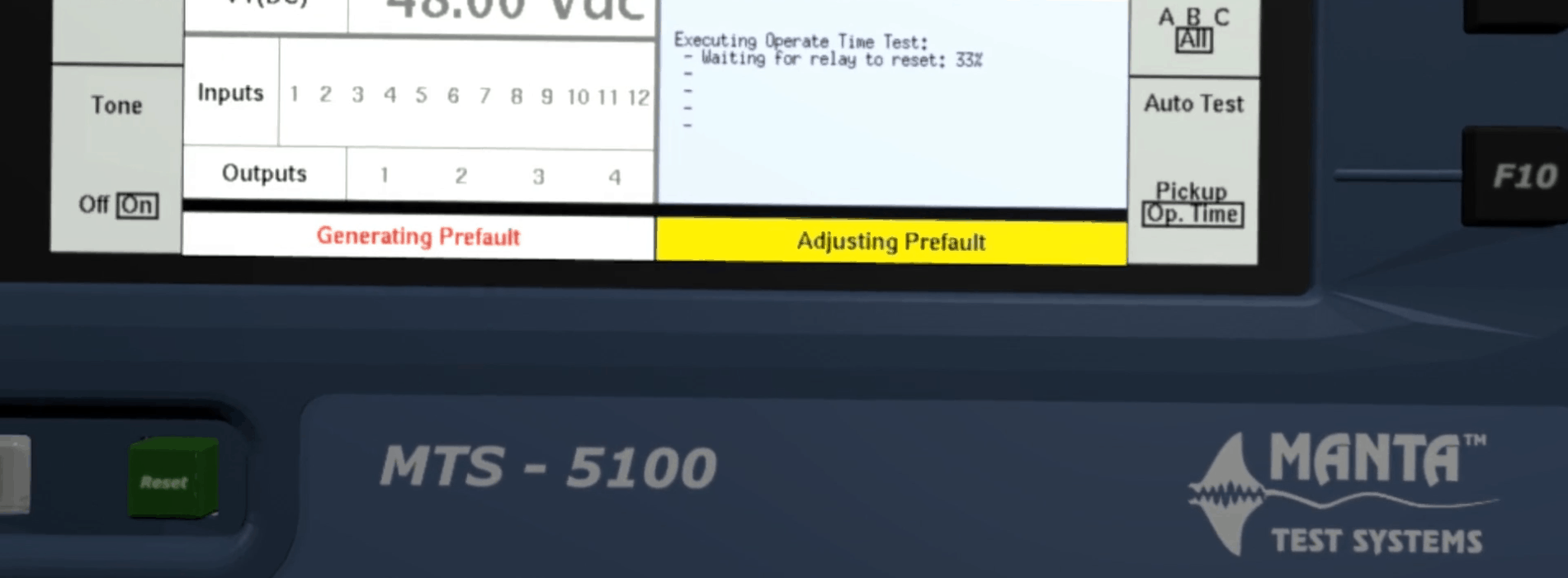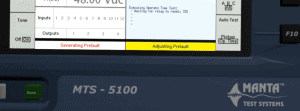Symmetrical Components Made Easy – Part 2
In the last post we examined and calculated the symmetrical components in a non-faulted, three-phase electrical power system. This post expands on the same process of using phasor diagrams to describe, illustrate, visualize and calculate the three symmetrical components: Positive Sequence, Negative Sequence and Zero Sequence. An examination of a phase to neutral (also referred to as phase to ground) fault will be conducted.
Positive Sequence Components B-N Fault
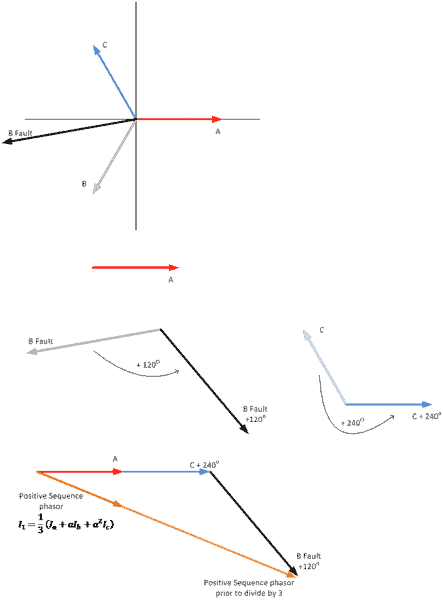
Thus, there is significant positive sequence in the phase to neutral fault and the positive sequence phasor is lagging the reference phase (phase A).
Negative Sequence Components B-N Fault
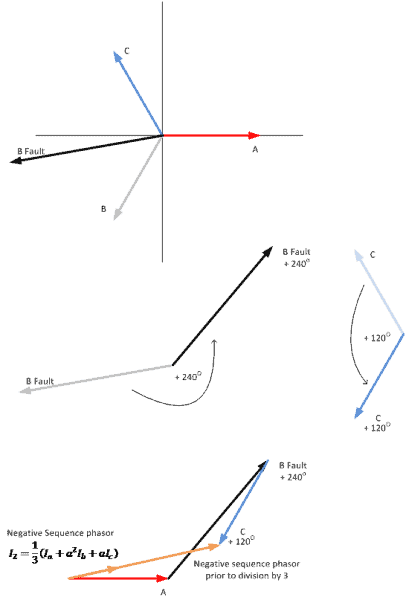
Thus, there is some negative sequence in the phase to neutral fault and the negative sequence phasor is leading the reference phase (phase A).
Zero Sequence Components B-N Fault
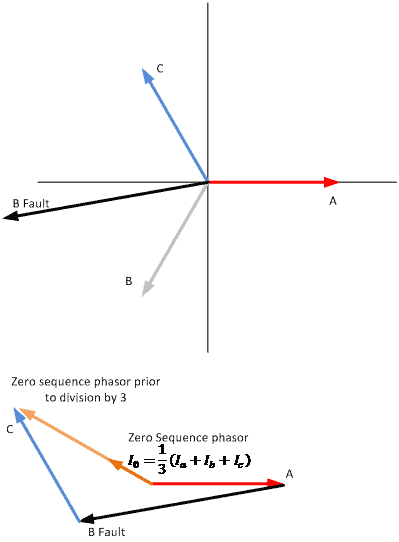
Thus, there is some zero sequence in the phase to neutral fault.
Conclusion:
Sequence components can be calculated and illustrated using phasor diagrams for a phase to neutral fault.
There are positive, negative and zero sequence components in a B-N fault; whereas a non-faulted system has only positive sequence – see “Symmetrical Components Made Easy – Part 1”

